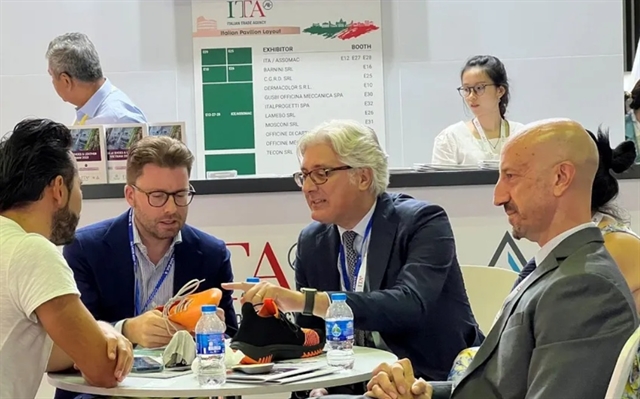 Life & Style
Life & Style

.jpg) |
| Silk painting Đi Chợ Tết (Going to Tết Market) by Nguyễn Tiến Chung. Photo coutersy of VNFAM |
HÀ NỘI Việt Nam Fine Arts Museum opened an exhibition yesterday displaying 36 paintings from its modern fine arts collection on the celebration of coming Tết (Lunar New Year holiday).
The exhibition entitled Xuân Hà Nội (Hà Nội Spring) will give fine arts lovers an emotional journey of viewing Tết festivities in the past and scenes of the lively Tết atmosphere.
"Exhibition visitors will see from these paintings the traditional customs of people in Hà Nội to welcome spring and Tết," said Nguyễn Anh Minh, the museum director, at the opening ceremony.
The paintings Đi Chợ Tết (Going to Tết Market) by Nguyễn Tiến Chung, Chợ Hoa (Flower Market) by Lệ Dung, Đón Giao Thừa (Welcome New Year's Eve) by Lê Quốc Lộc, and Giao Thừa Bên Hồ Gươm (New Year's Eve in Hồ Gươm) by Phạm Việt Hải depict traditional highlights Vietnamese people preparing for the biggest holiday of the year.
New Year's Eve is also strikingly portrayed in the works of well-known artists such as Nguyễn Tư Nghiêm, Nguyễn Trọng Kiệm and Trần Nguyên Đán.
Equally important are paintings depicting the outdoor activities and popular Hà Nội destinations during Tết, such as Phố (Street), Làng Hoa Ngọc Hà (The Landscape of Ngọc Hà Village), Gò Đống Đa (Đống Đa Mound), and Thăm Văn Miếu (Visiting the Temple of Literature).
Nguyễn Tiến Chung's Đi Chợ Tết was painted on silk in 1940. It is perhaps the most notable among the Tết themed works. With strong emotions, the silk painting features áo dài (traditional long dress) fluttering elegantly with the two ladies' steps. Red highlights appear throughout the painting, on their shoes, scarves and lips, resembling small embers bringing warmth amid the New Year's chill.
Chung (1914-1976) was among the 20th century’s outstanding talents in modern painting with a bold oriental style that was also rich in national spirit. He was a versatile artist who could work with many mediums including oil, lacquer, silk and woodcarving.
His painting Đi Chợ Tết captures the scene in vivid, beautiful detail. Its aesthetic values, in terms of both colour and composition, transcend time and convey a delicate spirit.
Lacquer painting Đón Giao Thừa was created by Lộc in 1957. The artist used lacquer technique with layers of light colours to create depth for the painting. The painting features children dividing small crackers in their house with their father sitting nearby. Outside are soldiers on patrol and people going out to welcome the New Year.
Both Chung and Lộc studied at L'École Supérieure des Beaux-Arts d’Indochine (The Indochina School of Fine Arts) and they were posthumously awarded the Hồ Chí Minh Prize for Literature and Art in 2000.
Lộc (1918-1987) was one of the most prized Vietnamese lacquer artists of the 20th century, along with Phạm Hậu and Nguyễn Gia Trí. He was the deputy director at the Gia Định School of Applied Arts. He made significant contribution to the training of young artists in the fields of lacquer and ceramics.
Oil-on canvas painting Chợ Hoa is a highlight of the exhibition. It depicts a crowd of people including sellers of typical ornamental plants and flowers for Tết. The artist did not focus on flowers and plants, but she drew a lot of people enjoying the flower market atmosphere.
"Springtime in Hà Nội with its distinctive beauty has always impressed and inspired artists," said Vương Duy Biên, deputy chairman of the Việt Nam Union of Literature and Arts Associations.
"Many works of art on this topic become part of life for anyone living or visiting Hà Nội. The atmosphere, the nature, the scenery of seasonal change in spring, all these offer an endless source of inspiration for generations of artists."
The exhibition is co-held by the museum and the CMYK Vietnam Ltd Co, with sponsors including the Visual Arts and Technology Company and Panasonic Connect Asia.
It combines a conventional method of displaying the paintings with digital technology, projection mapping bringing new experiences of visual effects for visitors.
It will run until February 25 at 66 Nguyễn Thái Học Street. VNS




.jpg)